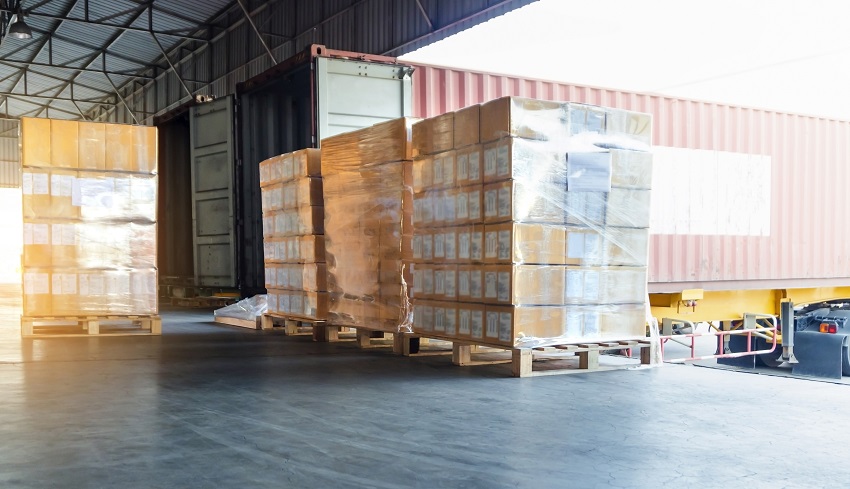Best known as one of the world’s largest small parcel carriers, FedEx is also the largest LTL carrier in the U.S. And its LTL business has been in the news lately for some notable service announcements that have frustrated many customers.
Here is a brief timeline of what’s happened the past few weeks that has FedEx LTL customers upset:
- FedEx announced it would stop picking up freight from 1,400 small LTL customers.
- After an outcry from those and other customers, FedEx rolled back those cancellations.
- FedEx blames its LTL rivals and shippers as the reason for the announcement and many ongoing problems in LTL.
Here is a telling quote from FedEx CEO Lance Moll.
The truckload sector is five times larger than LTL so “when they get full, the spillover comes into LTL. As the largest LTL carrier, we get the majority of it,” FedEx Freight CEO Lance Moll said during a call with analysts. “And so, when you have it combined with what the broad actions our competitors have taken to embargo entire sections of the country without any notice, impacting all customers, we decided to take an implemented temporary targeted volume control to drive and minimize the network disruptions and balance capacity to avoid the backlogs across the entire country.”
Blame aside, the issues FedEx is dealing with are not specific to the carrier. However, they are indicative of the broader challenges facing LTL and the entire logistics marketplace right now. Exploding demand for shipping has stressed the markets, and capacity in every part of the supply chain is tight — from ocean freight to warehousing to domestic truckload and LTL.
To help explain what’s going on with FedEx and the general industry issues with capacity — and what shippers like you can do about it — we spoke with Transportation Impact EVP of Sales and Marketing Jamie Vogel for her perspective on the situation.
Question: Why are things so difficult in the freight marketplace right now?
Jamie Vogel: The short answer is that the U.S. economy is doing really well as we come out of the pandemic. Consumer demand is strong, and there is a lot of pent-up demand from the last 16+ months. However, adding to the challenge is that there were already some structural problems for the freight industry in place pre-pandemic, such as a shortage of drivers, that are impacting things right now. Taken all together, there are simply not enough trucks and drivers on the road to move all the freight that companies need shipped.
Question: Can you help break down the comments from FedEx’s CEO regarding what’s happening within the LTL marketplace and what role shippers are playing?
Jamie Vogel: The most interesting part of the comment is the observation that TL volume is being shifted to LTL. This shows how tough the situation is for shippers because it’s very rare that LTL is ever a more cost-effective or faster way to deliver freight when you have the volume to fill a truck. But, as we’re seeing, LTL can become a reasonable option when you can’t find truck capacity. For example, if getting 2–3 pallets out of a full truckload delivered a little sooner can keep a customer’s production lines going until the rest of the truckload can get there, the extra cost is an easy choice.
LTL can also often provide more certainty for shippers, so deliveries can be planned more reliably than truckload when capacity is tight. For the most part, pickups and deliveries happen on more consistent schedules, and expedited options are often possible, too.
Question: Why the reversal on refusing pickups?
Jamie Vogel: The initial idea was to allow FedEx to focus its limited capacity and resources on more profitable shipper customers. However, a lot of the immediate backlash came from the customers they wanted to keep, because limiting those types of pickups, such as with inbound shipments, would have a big impact on all types and sizes of companies. So, indirectly, the refusal to pick up would affect the customers FedEx intended to keep servicing.
This leads to another point. LTL carriers have become very selective about taking on additional business. So, it’s our advice that all shippers take a close look at their carrier portfolio right now and make sure they have the right partners in place to get through this year’s peak season.
Question: How can shippers work through challenging times like these when carriers are in the driver’s seat? It’s a seller’s market out there for truckload and LTL freight.
Jamie Vogel: The current freight environment shows how connected supply chains are and how essential logistics partnerships can be to getting a shipper’s products on the road. What was true pre-pandemic is still true today; shippers need LSPs with access to capacity and supply chain visibility. With the support of technology and planning, it’s possible to know when getting two pallets delivered early at a little extra cost can save the day (and a lot of unplanned expenses).
Freight markets are always cyclical. But the cycle for most parts of the supply chain right now is extreme, and we should expect the current market conditions to continue through the rest of 2021 and into Q1 2022.
To make sure you have the TL and LTL capacity your company needs for the upcoming peak shipping season, contact info@transimpact.com. We can help ensure you have on board the carriers and technology you need to keep your freight moving.


